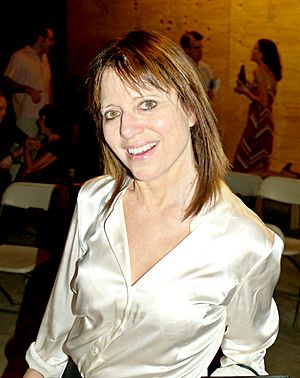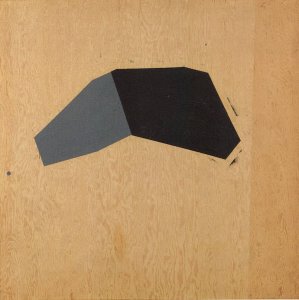Judy Rifka facts for kids
Quick facts for kids
Judy Rifka
|
|
|---|---|

Judy Rifka (2010)
|
|
| Born | September 25, 1945 |
| Nationality | American |
| Education | New York Studio School |
| Known for | Painting |
Judy Rifka is an American artist born in 1945. She has been creating art since the 1970s. Judy Rifka is known for her paintings and also for her video art. She has worked a lot in New York City, especially in areas like Tribeca and the Lower East Side. She was part of important art groups and movements in the 1970s and 1980s, like Colab.
Contents
Judy Rifka's Art Style
Judy Rifka's art is known for its unique look. She often uses a "nervous line" and a fast, energetic style. Her art has been described as having a "careless" look, but it is actually made with great care. This makes her work feel lively and full of energy.
Early Works and Exhibitions
Judy Rifka showed her art in many important exhibitions. In 1979, she was part of "Public Arts International/Free Speech" performances. She also took part in the famous 1980 Colab The Times Square Show. Her art was featured in two Whitney Museum Biennials, in 1975 and 1983. She also showed her work at Documenta 7, a major art event.
In 1984, Judy Rifka's art series called Architecture was featured on the cover of Art in America magazine. For these works, she started using special three-dimensional frames for her paintings. These frames made her art stand out even more.
Paintings of Figures
By 1985, Judy Rifka began painting large pictures of people. These paintings also used her unique three-dimensional frames. They were shown at the Brooke Alexander Gallery.
One of her three-dimensional paintings, Bacchanaal, even appeared on the TV show Miami Vice in 1985. The painting was on display at the Museum of Art Fort Lauderdale.
Using Plywood and New Ideas
Judy Rifka often used plywood as a surface for her paintings. The painting Untitled from 1974, which is at the Honolulu Museum of Art, shows how she used plywood. This made her art different and exciting.
Artist and writer Mark Bloch said her work had "imaginative surfaces." He called them "experimental laboratories" for colors and feelings. Another artist and curator, Greg de la Haba, said Judy Rifka's unusual shapes on plywood are "among the most important paintings of the decade."
Art and Modern Times
Judy Rifka's art helped bring Pop Art ideas into a new style called Postmodernism. This style mixed politics and high art. Art critic Robert Pincus-Witten noted that Rifka loved the process of creating art and discovering new things. He said her paintings show "playful rapidity and delight in discovery."
In 2013, Judy Rifka became very popular on Facebook. She posted daily "selfies" and friendly comments. This helped her connect with a large audience. She also had many solo and group art shows in Manhattan and other places.
Recent Exhibitions
In 2016, a big show of Judy Rifka's art was held at the Jean-Paul Najar Foundation in Dubai. In 2017, another show of her work was presented at the Amstel Gallery in New York City. In 2019, her video Bubble Dancers New Space Ritual was chosen for the International Istanbul Bienali.
Images for kids



